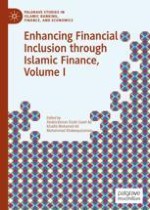This book, the first of two volumes, highlights the concept of financial inclusion from the Islamic perspective. An important element of the Sustainable Development Goals (SDGs), financial inclusion has been given significant prominence in reform and development agendas proposed by the United Nations and G-20. The significance of Islamic financial inclusion goes beyond improved access to finance to encompass enhanced access to savings and risk mitigation products, as well as social inclusion that allows individuals and companies to engage more actively in the real economy. It represents one of the important drivers of economic growth.
Gender disparity exists within financial access and its extent varies widely across world economies. South Asia, the Middle East and North Africa have the largest gender gaps, with women in these regions being forty per cent less likely than men to have a formal account at a financial institution. Analysing how Islamic financial inclusion can empower individuals, this volume explores the contribution of Islamic microfinance in achieving SDGs and solving income and wealth inequality. Comprising a combination of empirical evidence, theory and modelling, this edited collection illustrates how to improve access to finance, making it essential reading for those researching both Islamic finance and development finance.
